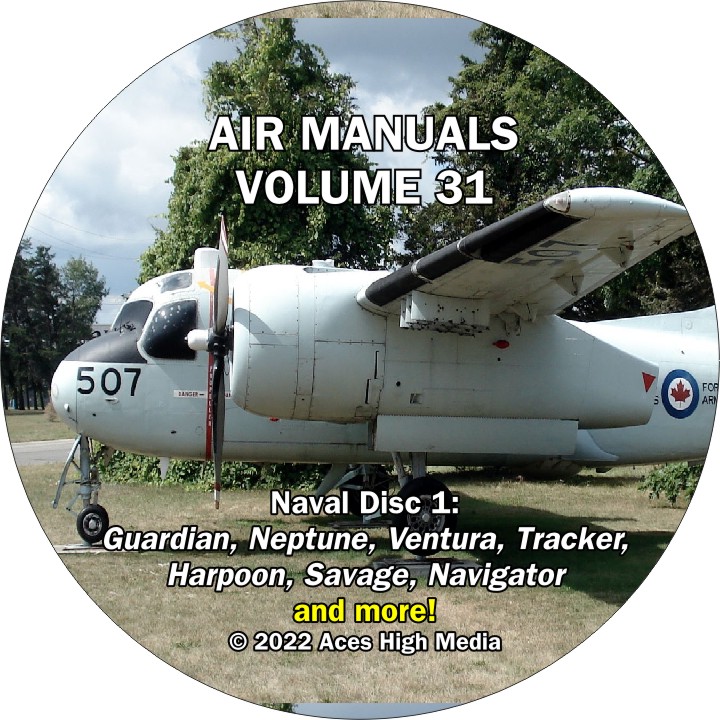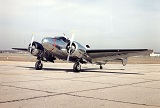Aces High Air Manuals
Volume 31: Naval Disc 1
Grumman AF Guardian
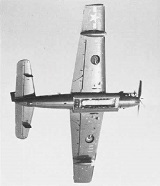
|
Grumman AF-2S Guardian Pilot's Handbook
78 pages
The Grumman AF Guardian was the first purpose-built anti-submarine warfare (ASW) carrier-based aircraft to enter service with the United States Navy. It consisted of two airframes, one for detection gear, the other for weapons. The Guardian remained in service until August 1955, when it was replaced by the twin-engined Grumman S-2 Tracker. The Guardian was the largest single-engine piston-powered carrier aircraft ever to see service.
|
North American AJ-1 Savage
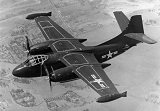
|
North American AJ-1 Savage Pilot's Handbook
82 pages
The North American AJ Savage (later A-2 Savage) was a carrier-based medium bomber built for the United States Navy by North American Aviation. The aircraft was designed shortly after World War II to carry atomic bombs and this meant that the bomber was the heaviest aircraft thus far designed to operate from an aircraft carrier. It was powered by two piston engines and a turbojet buried in the rear fuselage. The AJ-1 first became operational in 1950 and several were based in South Korea during 1953 as a deterrent against the Communists. Of the 140 built, plus three prototypes, 30 were reconnaissance aircraft. Inflight-refueling equipment was deployed on the Savage in the mid-1950s. The bomber was replaced by the Douglas A3D Skywarrior beginning in 1957.
|
Grumman S-2 Tracker

|
Grumman S2F-1 and S2F-2 Tracker Flight Handbook
134 pages
The Grumman S-2 Tracker (S2F prior to 1962) was the first purpose-built, single airframe anti-submarine warfare (ASW) aircraft to enter service with the U.S. Navy. Designed and initially built by Grumman, the Tracker was of conventional design with twin reciprocating propeller engines, a high wing and tricycle undercarriage. The type was exported to a number of navies around the world. Introduced in 1952, the Tracker and its E-1 Tracer derivative saw service in the U.S. Navy until the mid-1970s, and its C-1 Trader derivative until the mid-1980s, with a few aircraft remaining in service with other air arms into the 21st century. Argentina and Brazil are the last countries to still use the Tracker.
|

|
De Havilland Canada CS2F-2 Tracker Operating Instructions
173 pages
In 1954, de Havilland Canada entered into a contract to build Trackers under license to replace the outmoded Grumman TBM-3E Avengers being used by the Royal Canadian Navy. A total of 99 Trackers were built by de Havilland Canada, with the first Canadian-built aircraft flying on 31 May 1956. From 1957 onwards, these aircraft operated from the newly deployed aircraft carrier HMCS Bonaventure and various shore bases. All the Canadian Trackers were built to the earlier "A" model airframe design with a length of 42 feet in order to fit in Bonaventure's hangar. In 1960–1961, 17 CS2F-1 aircraft, which had been relegated to training and utility duties by the CS2F-2, were transferred to the Royal Netherlands Navy. From 1964, 45 CS2F-2s were upgraded by fitting revised electronic equipment and sensors, becoming CS2F-3s. Also in 1964, a pair of CS2F-1 aircraft were stripped of armament and ASW electronics, converted to transports, and subsequently used for carrier onboard delivery. The CS2F-1, -2, and -3 were redesignated as the CP-121 Mk.1, Mk. 2, and Mk. 3 respectively following the unification of Canadian forces in 1968.
|
Lockheed P2V Neptune
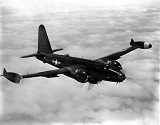
|
Lockheed P2V-5F Neptune Flight Handbook
508 pages
The Lockheed P-2 Neptune (designated P2V by the United States Navy prior to September 1962) was a Maritime patrol and anti-submarine warfare (ASW) aircraft. It was developed for the US Navy by Lockheed to replace the Lockheed PV-1 Ventura and PV-2 Harpoon, and was replaced in turn by the Lockheed P-3 Orion. Designed as a land-based aircraft, the Neptune never made a carrier landing, although a small number of aircraft were converted and deployed as carrier-launched, stop-gap nuclear bombers which would have to ditch or recover at land bases. The type was successful in export and saw service with several armed forces.
|

|
Lockheed P2V-7 Neptune Flight Manual
415 pages
The P2V-8 was the last Neptune variant produced by Lockheed, powered by R-3350-32W and J-34 engines. Fitted with lower drag wingtip tanks, AN/APS-20 search radar in a revised radome and a bulged cockpit canopy. Early aircraft were fitted with defensive gun turrets but these were removed as for the P2V-5. 287 were built, including 48 assembled by Kawasaki in Japan. Redesignated P-2H in 1962.
|
Lockheed PV-1 Ventura and PV-2 Harpoon
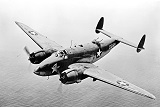
|
Lockheed PV-1 Ventura Pilot's Flight Operating Instructions
72 pages
The Lockheed Ventura is a twin engine medium bomber of World War II, used by United States and British Commonwealth forces in several guises, including maritime patrol.
The Ventura was developed from the Lockheed Model 18 Lodestar transport, as a replacement for the Lockheed Hudson bombers then in service with the Royal Air Force. Used in daylight attacks against occupied Europe, they proved to have weaknesses and were removed from bomber duty and some used for patrols by Coastal Command. |
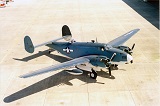
|
Lockheed PV-2, PV-2C and PC-2D Harpoon Pilot's Handbook
128 pages
The PV-2 Harpoon was a major redesign of the Ventura with the wing area increased from 551 sq.ft to 686 sq.ft giving an increased load-carrying capability, and which first flew on 3 December 1943. The motivation for redesign was weaknesses in the PV-1, which had shown itself to have problems in taking off when carrying a full load of fuel. On the PV-2, the armament became standardized at five forward-firing machine guns. Many early PV-1s had a bombardier's position, which was deleted in the PV-2. Some other significant developments included the increase of the bombload by 30% to 4,000 lb, and the ability to carry eight 5-inch HVAR rockets under the wings.
While the PV-2 was expected to have increased range and better takeoff, the anticipated speed statistics were projected lower than those of the PV-1, due to the use of the same engines but an increase in weight. The Navy ordered 500 units, designating them with the popular name Harpoon. |
Beechcraft Twin Beech or Navigator
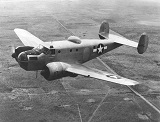
|
Beechcraft SNB-2, SNB-3, SNB-3E, SNB-4, SNB-5, SNB-5P, JRB-4, JRB-5, JRB-6 Navigator Pilot's Handbook
106 pages
The Beechcraft Model 18 (or "Twin Beech", as it is also known) is a 6- to 11-seat, twin-engined, low-wing, tailwheel light aircraft manufactured by the Beech Aircraft Corporation of Wichita, Kansas. Continuously produced from 1937 to November 1969 (over 32 years, a world record at the time), over 9,000 were produced, making it one of the world's most widely used light aircraft. Sold worldwide as a civilian executive, utility, cargo aircraft, and passenger airliner on tailwheels, nosewheels, skis or floats, it was also used as a military aircraft.
|
Consolidated TBY-2 Sea Wolf

|
Consolidated TBY-2 Sea Wolf Handbook of Pilot's Operating Instructions
113 pages
The Consolidated TBY Sea Wolf was a United States Navy torpedo bomber of World War II. A competitor and contemporary to the very similar Grumman TBF Avenger, the Sea Wolf was subject to substantial delays and never saw combat; only 180 of the type were built before cancellation after V-J Day.
|
